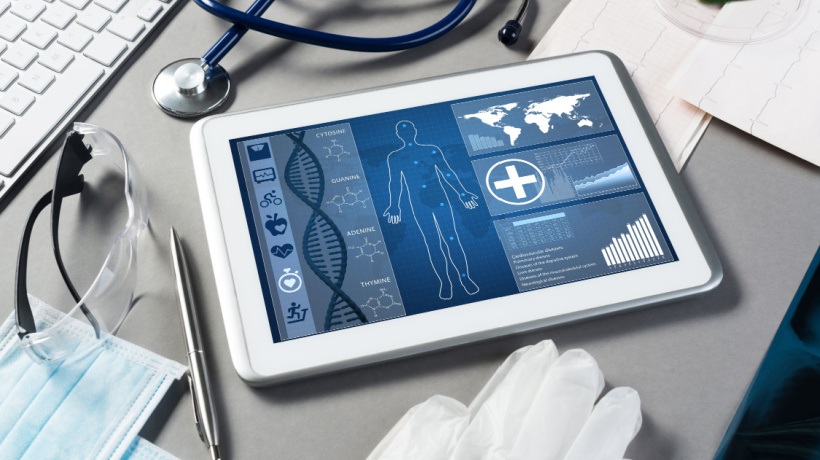Effective Online Learning Environments For Medicine And Science
Designing an effective online learning environment can be challenging, particularly in fields that require hands-on training and practical experience. This article will explore the key components of designing effective online learning environments for medical and science practitioners in greater detail.
Instructional Design
Effective Instructional Design is a critical component of designing effective online learning environments. The goal of Instructional Design is to create instructional materials and experiences that are both systematic and efficient. In the case of medical and science education, Instructional Design should be based on evidence-based practices and should align with the competencies required for medical and science practitioners. Effective instructional materials should be engaging, interactive, and relevant to the target audience. It is also essential to ensure that the design of the learning materials is flexible, allowing learners to learn at their own pace and in their preferred learning style.
One of the most essential aspects of Instructional Design is identifying the learning needs of the target audience. For example, if the online course is designed for medical practitioners, the Instructional Design must consider the level of experience of the learners. Additionally, the Instructional Design should consider the target audience's cultural backgrounds and educational needs.
Learning Management Systems
A Learning Management System (LMS) is vital to any online learning environment. LMS platforms provide various features that facilitate the delivery of online courses, such as course creation, communication, and assessment tools. They also enable learners to track their progress, receive feedback, and generate reports on learning outcomes.
When designing an online learning environment for medical and science practitioners, selecting an LMS specifically designed for medical and science education is essential. The LMS should provide features that support the learning needs of medical and science practitioners, such as virtual simulations, case studies, and real-world scenarios. It is also vital to ensure that the LMS is user-friendly and that the course materials are accessible from multiple devices.
Virtual Simulations
Virtual simulations are vital to online learning environments for medical and science practitioners. These simulations allow learners to practice their skills in a safe and controlled environment. They can also be used to recreate complex medical and scientific scenarios that are difficult to replicate in real life.
Virtual simulations should be designed to be as realistic as possible, providing learners with an immersive learning experience. The simulations should also align with the course's learning objectives and allow learners to practically apply their knowledge and skills.
In addition to virtual simulations, online learning environments can incorporate other multimedia forms, such as videos, podcasts, and interactive games. Using multimedia can enhance the learning experience and make the content more engaging.
Assessment And Feedback
Assessment and feedback are essential components of effective online learning environments. Assessments should be designed to measure the competencies required for medical and science practitioners. They should also be aligned with the course's learning objectives and allow learners to demonstrate their understanding of the subject matter.
Feedback should be provided to learners to help them understand their strengths and weaknesses and to identify areas where they can improve. Feedback should be timely, specific, meaningful, and designed to support learner development.
It is also essential to ensure that assessments and feedback are culturally appropriate, especially in online learning environments with diverse learners from different cultural backgrounds.
Technology
Technology is an essential component of designing effective online learning environments. Medical and science practitioners can benefit from various technologies like virtual simulations, mobile devices, and collaboration tools.
Virtual simulations, as mentioned earlier, are a critical technology in medical and science online learning environments. Simulations allow learners to practice their skills in a safe environment, allowing them to experiment with different scenarios and learn from their mistakes without risk to patients. However, virtual simulations are just one technology that can enhance the online learning experience. Mobile devices, such as smartphones and tablets, can also give learners access to course materials on the go. Collaboration tools like online discussion forums and video conferencing can facilitate learners' interaction and collaboration.
It is important to note that the technology used should not be the focus when designing an online learning environment. Instead, the technology should support the course's objectives and provide learners with a meaningful and engaging learning experience.
Accessibility And Inclusivity
Another important consideration when designing effective online learning environments for medical and science practitioners is accessibility and inclusivity. Online learning environments should be designed to be accessible to all learners, regardless of their physical or cognitive abilities. This includes providing closed captioning for videos, alternative text for images, and ensuring that the online course is compatible with screen readers.
Inclusivity also includes designing courses that are culturally appropriate and sensitive to the diverse backgrounds and experiences of the learners. Creating an environment where all learners feel valued and respected is essential.
Conclusion
Designing effective online learning environments for medical and science practitioners requires careful consideration of Instructional Design, Learning Management Systems, virtual simulations, assessment and feedback, technology, accessibility, and inclusivity. Each component is critical in creating an engaging and effective online learning experience for medical and science practitioners.
When designing an online course for medical and science practitioners, it is essential to keep the learners' needs and preferences in mind. The course should be flexible, allowing learners to learn at their own pace and in their preferred learning style. It should also be designed to be interactive and engaging, incorporating multimedia and collaboration tools to enhance the learning experience.
Ultimately, the goal of designing effective online learning environments for medical and science practitioners is to provide learners with the knowledge and skills they need to be successful in their field. With careful consideration of Instructional Design, technology, accessibility, and inclusivity, online learning can provide a valuable and effective way for medical and science practitioners to enhance their skills and knowledge while continuing to work in their field.








